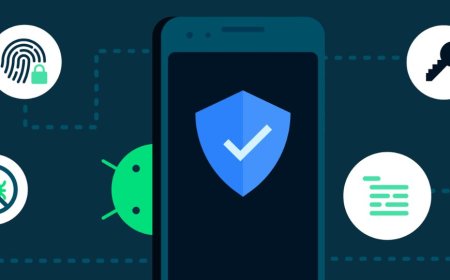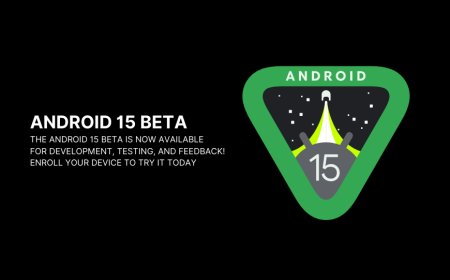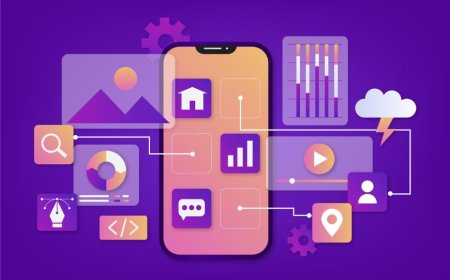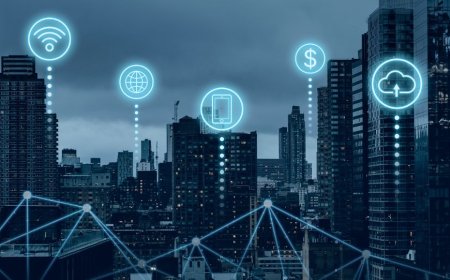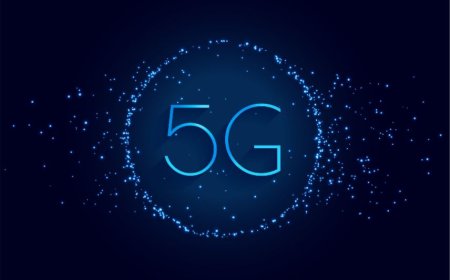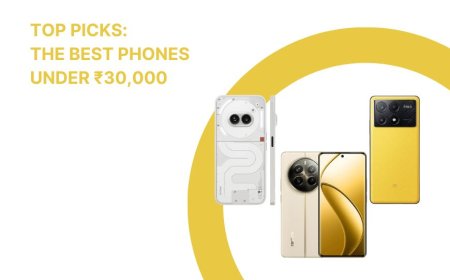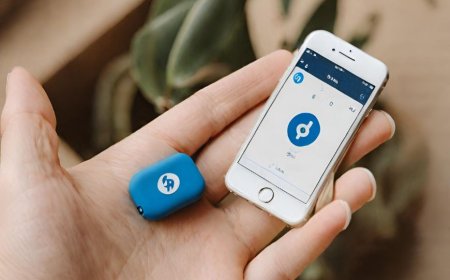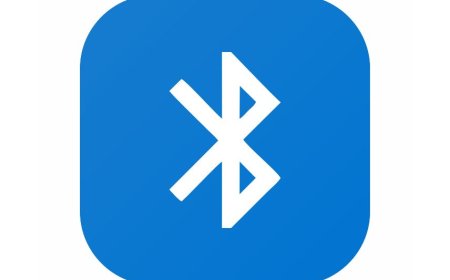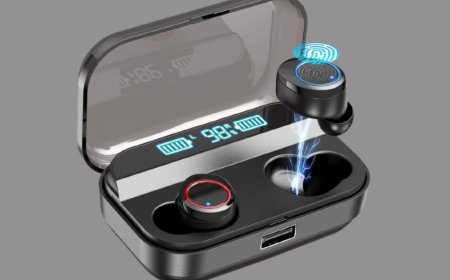Hands-On with the Latest Smartphones
Get up close and personal with the latest smartphones through our hands-on tech reviews. Discover the best features and innovations at Tectoks!
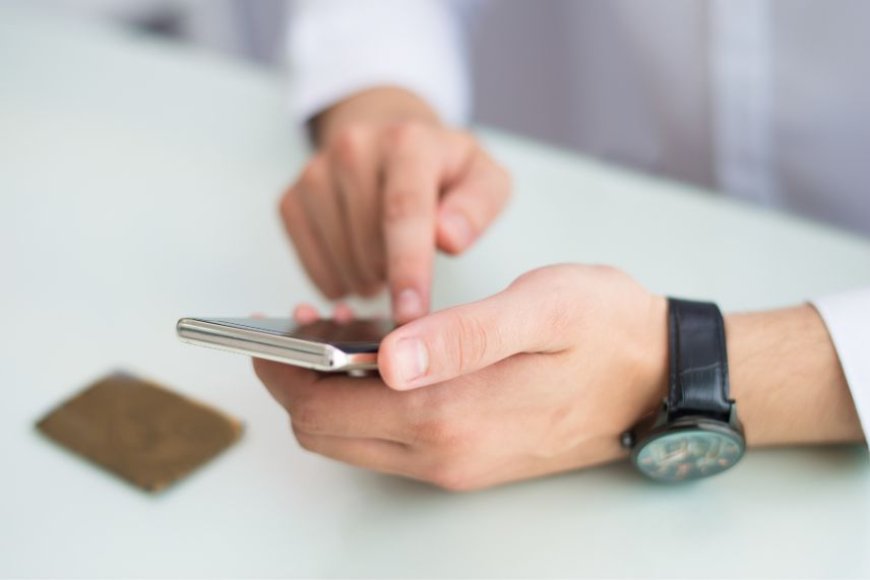
Table of Contents:
-
Introduction
-
Exploring the Latest Smartphone Features
-
Delving into New Mobile Technology
-
In-Depth Smartphone Comparison Reviews
-
The Importance of Smartphone Software Updates
-
Conclusion
Introduction
Smartphones are among the most popular and commonly used electronic devices in the world. They offer a range of features and functionalities that make our lives easier, more productive, and more fun. But with so many models and brands to choose from, how do you know which one is the best for you? In this blog post, we will give you a hands-on review of some of the latest smartphones on the market and help you decide which one suits your needs and preferences. We will compare their design, performance, camera, battery, and price and give you our honest opinion on each device. Whether you are looking for a flagship, a mid-range, or a budget smartphone, we have got you covered. So, let’s get started!
Exploring the Latest Smartphone Features
Exploring the latest smartphone features is a fascinating way to learn about the evolution and innovation of technology. Smartphones have come a long way since their inception, and they offer a lot more than just making calls and sending messages. In this blog post, we will explain how smartphone features have advanced over the years, what the cutting-edge features are in the latest models, and how they provide a revolutionary user experience.
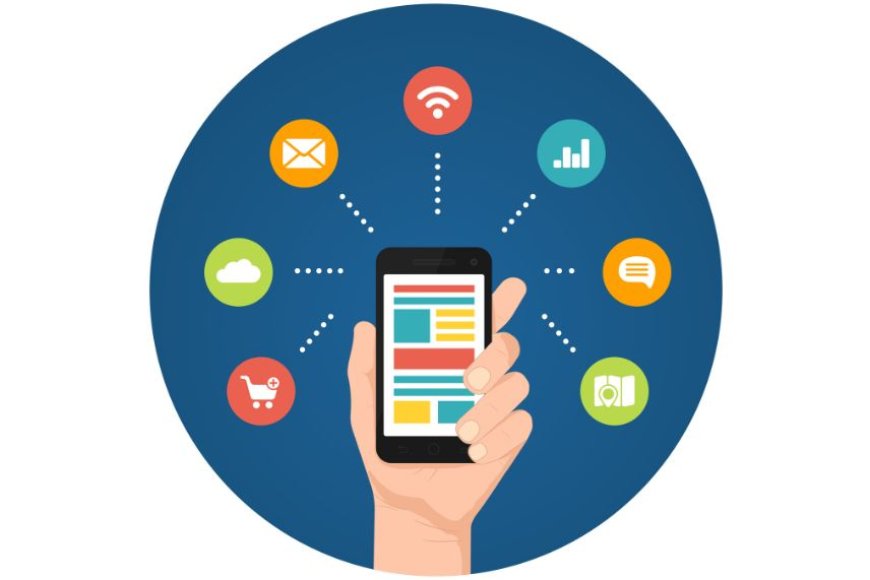
The Evolution of Smartphone Features
Past vs. Present: How Features Have Advanced
Smartphones have undergone a remarkable transformation in terms of their design, performance, camera, battery, and price. Here are some of the major differences between past and present smartphone features:
-
Design: The first smartphones were bulky, heavy, and had small screens with low resolution. They also had physical keyboards, buttons, and antennas. The latest smartphones are sleek, light, and have large screens with high resolution. They also have touchscreens, fingerprint scanners, and wireless charging.
-
Performance: The first smartphones had slow processors, low memory, and limited storage. They also had poor connectivity, security, and compatibility. The latest smartphones have fast processors, high memory, and ample storage. They also have 5G, Wi-Fi 6, Bluetooth 5.0, NFC, and biometric authentication.
-
Camera: The first smartphones had low-quality cameras with low megapixels, zoom, and flash. They also had limited modes, filters, and editing options. The latest smartphones have high-quality cameras with high megapixels, optical zoom, and LED flash. They also have multiple lenses, AI, and AR features.
-
Battery: The first smartphones had low-capacity batteries with short battery life and slow charging. They also had removable batteries that could be replaced. The latest smartphones have high-capacity batteries with long battery life and fast charging. They also have non-removable batteries that are integrated with the device.
-
Price: The first smartphones were expensive and had limited availability. They also had high maintenance and repair costs. The latest smartphones are affordable and have wide availability. They also have low maintenance and repair costs.
Cutting-Edge Features in the Latest Models
The latest smartphones have some amazing features that make them stand out from the crowd. Here are some of the cutting-edge features in the latest models:
-
Foldable and Rollable Screens: Some of the latest smartphones have foldable and rollable screens that can change their shape and size according to the user’s preference. For example, the Samsung Galaxy Z Fold 5 and the Moto Rollable are two of the most anticipated smartphones with foldable and rollable screens, respectively.
-
Under-Display Cameras: Some of the latest smartphones have under-display cameras that are hidden under the screen and only appear when needed. This allows for a full-screen display without any notch or hole-punch. For example, the ZTE Axon 20 5G and the Xiaomi Mi 11 Pro are two of the first smartphones with under-display cameras.
-
Periscope Zoom: Some of the latest smartphones have periscope zoom that allows for a high level of optical zoom without compromising the quality of the image. This enables the user to capture distant objects with clarity and detail. For example, the Huawei P60 Pro+ and the Samsung Galaxy S23 Ultra are two of the best smartphones with periscope zoom.
-
Reverse Wireless Charging: Some of the latest smartphones have reverse wireless charging that allows them to charge other devices wirelessly by placing them on the back of the phone. This is useful for sharing power with other devices that support wireless charging. For example, the iPhone 15 Pro and the OnePlus 11 Pro are two of the latest smartphones with reverse wireless charging.
Revolutionary Smartphone User Experience
User-Centric Design Innovations
The latest smartphones have some user-centric design innovations that enhance user interaction and ease of use. Here are some of the user-centric design innovations in the latest smartphones:
-
Haptic Feedback: Haptic feedback is a feature that provides tactile sensations to the user when they interact with the phone. It can simulate different textures, vibrations, and pressures to create a more realistic and immersive experience. For example, the iPhone 15 and the Google Pixel 8 are two smartphones with advanced haptic feedback.
-
Gesture Control: Gesture control is a feature that allows the user to control the phone with simple hand gestures without touching the screen. It can detect the user’s movements and gestures using sensors and cameras and perform various actions accordingly. For example, the LG G8 ThinQ and the Samsung Galaxy Note 10 are two smartphones with gesture control.
-
Face Unlock: Face unlock is a feature that allows the user to unlock the phone with their face using facial recognition technology. It can scan the user’s face using the front camera and compare it with the stored data to verify their identity. For example, the OnePlus 11R and the OPPO Find N3 Flip are two smartphones with face unlock.
Enhancing User Interaction and Ease of Use
The latest smartphones have some features that enhance user interaction and ease of use. Here are some of the features that enhance user interaction and ease of use on the latest smartphones:
-
Dark Mode: Dark mode is a feature that changes the color scheme of the phone’s interface to a darker theme. It can reduce eye strain, save batteries, and improve readability in low-light conditions. For example, iOS 17 and Android 13 are two of the latest operating systems that support dark mode.
-
Voice Assistant: A voice assistant is a feature that allows the user to interact with the phone using voice commands. It can perform various tasks and functions, such as making calls, sending messages, setting reminders, playing music, and more. For example, Siri and Google Assistant are two of the most popular voice assistants on the latest smartphones.
-
Smart Reply: Smart Reply is a feature that suggests quick and relevant responses to the user’s incoming messages. It can analyze the context and tone of the message and generate appropriate replies that the user can choose from. For example, Gmail and WhatsApp are two of the apps that support smart replies on the latest smartphones.
Delving into New Mobile Technology
Delving into new mobile technology is a great way to learn about the latest trends and innovations in the smartphone industry. Mobile technology is constantly evolving and improving, and it offers new possibilities and opportunities for users and developers alike. In this topic, we will explain some of the breakthroughs in mobile technology, how they impact the user experience and performance, and how to unveil the power of the latest smartphones using performance testing.

Breakthroughs in Mobile Technology
Introduction to Emerging Technologies
Mobile technology is a broad term that encompasses various aspects of the smartphone, such as hardware, software, network, security, and applications. Some of the emerging technologies that are shaping the future of mobile technology are:
-
Artificial Intelligence (AI): AI is a technology that enables the smartphone to perform tasks that normally require human intelligence, such as speech recognition, image recognition, natural language processing, and machine learning. AI can enhance the smartphone’s capabilities and functionalities, such as personalization, automation, optimization, and recommendation. For example, the Google Pixel 8 and the Huawei Mate 60 Pro are two of the smartphones that use AI to improve their camera, battery, and performance.
-
Augmented Reality (AR) and Virtual Reality (VR): AR and VR are technologies that create immersive and interactive experiences for the smartphone user by overlaying digital content in the real world or creating a simulated environment. Samsung and VR can enhance the smartphone’s entertainment and education value, such as in gaming, shopping, tourism, and learning. For example, the Samsung Galaxy S23 and the iPhone 15 are two of the smartphones that support AR and VR features with their high-resolution displays and sensors.
-
Blockchain: Blockchain is a technology that enables the smartphone to store and transfer data in a secure, decentralized, and transparent manner. Blockchain can enhance the smartphone’s security and privacy, as well as enable new applications and services, such as cryptocurrency, smart contracts, and digital identity. For example, the HTC Exodus 1S and the Sirin Finney are two of the smartphones that have built-in blockchain features and wallets.
Impacts on User Experience and Performance
Emerging technologies in mobile technology have significant impacts on the user experience and performance of smartphones. Some of the impacts are:
-
Enhanced User Experience: The emerging technologies can provide a more engaging, personalized, and convenient user experience for the smartphone user. They can offer more features and functionalities, such as voice and gesture control, face and fingerprint unlock, smart reply, and dark mode. They can also offer more immersive and interactive experiences, such as AR and VR gaming, AI and blockchain-based apps, and haptic feedback.
-
Improved Performance: The emerging technologies can also improve the performance of the smartphone in terms of speed, power, and efficiency. They can optimize the smartphone’s hardware and software, such as processor, memory, storage, battery, and operating system. They can also enhance the smartphone’s connectivity and compatibility, such as with 5G, Wi-Fi 6, Bluetooth 5.0, NFC, and biometric authentication.
Unveiling the Power: Smartphone Performance Testing
Benchmarking Performance Metrics
Smartphone performance testing is a process of measuring and evaluating the smartphone’s performance using various metrics and tools. Smartphone performance testing can help the user compare different models and brands, identify strengths and weaknesses, and optimize settings and usage. Some of the common performance metrics and tools for smartphone performance testing are:
-
Processor: The processor is the brain of the smartphone that executes the instructions and processes the data. The processor’s performance can be measured by its speed, cores, and architecture. Some of the tools that can test the processor’s performance are Geekbench, AnTuTu, and PCMark.
-
Memory: The memory is the short-term storage of the smartphone that holds the data and programs that are currently in use. The memory’s performance can be measured by its capacity, speed, and type. Some of the tools that can test the memory’s performance are Geekbench, AnTuTu, and PCMark.
-
Storage: The storage is the long-term storage of the smartphone that stores the data and programs that are not in use. The storage’s performance can be measured by its capacity, speed, and type. Some of the tools that can test the storage’s performance are AndroBench, A1 SD Bench, and CrystalDiskMark.
-
Battery: The battery is the power source of the smartphone that provides the energy to run the device. The battery’s performance can be measured by its capacity, life, and charging. Some of the tools that can test the battery’s performance are Battery HD, AccuBattery, and Ampere.
-
Display: The display is the screen of the smartphone that shows the visual output to the user. The display’s performance can be measured by its size, resolution, refresh rate, and brightness. Some of the tools that can test the display’s performance are Display Tester, Screen Test, and TestM.
Real-World Testing Scenarios
Besides benchmarking performance metrics and tools, smartphone performance testing can also be done using real-world testing scenarios that simulate the actual usage and conditions of the smartphone. Real-world testing scenarios can help the user evaluate the smartphone’s performance more realistically and practically. Some of the common real-world testing scenarios for smartphone performance testing are:
-
Gaming: Gaming is a scenario that tests the smartphone’s performance in terms of graphics, sound, and responsiveness. Gaming can also test the smartphone’s battery, temperature, and network. Some of the games that can be used for gaming performance testing are PUBG Mobile, Asphalt 9, and Call of Duty Mobile.
-
Streaming: Streaming is a scenario that tests the smartphone’s performance in terms of video, audio, and buffering. Streaming can also test the smartphone’s battery, temperature, and network. Some of the apps that can be used for streaming performance testing are YouTube, Netflix, and Spotify.
-
Browsing: Browsing is a scenario that tests the smartphone’s performance in terms of web pages, tabs, and loading. Browsing can also test the smartphone’s battery, temperature, and network. Some of the apps that can be used for browsing performance testing are Chrome, Firefox, and Opera.
-
Multitasking: Multitasking is a scenario that tests the smartphone’s performance in terms of switching, running, and closing multiple apps. Multitasking can also test the smartphone’s memory, storage, and battery. Some of the apps that can be used for multitasking performance testing are Facebook, Instagram, and WhatsApp.
In-Depth Smartphone Comparison Reviews
In-depth smartphone comparison reviews are a useful way to learn about the differences and similarities between various smartphone models and brands. They can help the user make an informed decision when choosing a smartphone that meets their needs and preferences. In this topic, we will explain how to conduct in-depth smartphone comparison reviews using feature-by-feature evaluation, the pros and cons of leading models, and user perspective with hands-on comparison.

Feature-by-Feature Evaluation
Feature-by-feature evaluation is a method of comparing smartphones by analyzing their features and functionalities, such as design, performance, camera, battery, and price. Feature-by-feature evaluation can help the user understand the strengths and weaknesses of each smartphone, as well as their trade-offs and compromises. Some of the steps for feature-by-feature evaluation are:
-
Select the smartphones to compare: The user should select the smartphones that they want to compare based on their criteria and preferences. For example, the user may want to compare the latest flagship models from different brands, such as the Samsung Galaxy S23, the iPhone 15, and the OnePlus 11.
-
List the features to compare: The user should list the features that they want to compare across the smartphones, such as design, performance, camera, battery, and price. The user should also define the metrics and standards for each feature, such as size, resolution, speed, megapixels, capacity, and cost.
-
Compare the features: The user should compare the features of each smartphone using the metrics and standards that they have defined. The user should also use reliable sources and tools to obtain the data and information for each feature, such as specifications, reviews, benchmarks, and tests.
-
Evaluate the features: The user should evaluate the features of each smartphone based on their data and information, as well as their personal opinion and experience. The user should also weigh the importance and relevance of each feature for their needs and preferences, such as gaming, photography, or productivity.
Pros and Cons of Leading Models
Pros and cons of leading models is a method of comparing smartphones by summarizing their advantages and disadvantages, as well as their unique selling points and drawbacks. The pros and cons of leading models can help the user get an overview and impression of each smartphone, as well as their value and quality. Some of the steps for the pros and cons of leading models are:
-
Identify the leading models: The user should identify the leading models that they want to compare based on their popularity and reputation. For example, the user may want to compare the best-selling models from different brands, such as the Xiaomi Mi 13, the Huawei P60, and the Google Pixel 8.
-
List the pros and cons: The user should list the pros and cons of each smartphone based on their features and functionalities, as well as their feedback and ratings. The user should also highlight the unique selling points and drawbacks of each smartphone, such as innovation, design, performance, camera, battery, and price.
-
Compare the pros and cons: The user should compare the pros and cons of each smartphone using a balanced and objective approach. The user should also consider the context and perspective of each pro and con, such as the market, the competition, and the user's expectations.
-
Evaluate the pros and cons: The user should evaluate the pros and cons of each smartphone based on their summary and comparison, as well as their personal opinion and experience. The user should also rank the smartphones according to their pros and cons, as well as their overall satisfaction and recommendations.
User Perspective: Hands-On Comparison
User perspective: hands-on comparison is a method of comparing smartphones by using and testing them in real-life scenarios and situations, such as gaming, streaming, browsing, and multitasking. User perspective: hands-on comparison can help the user assess the smartphone’s performance and user experience, as well as their compatibility and suitability. Some of the steps for user perspective: hands-on comparison are:
-
Obtain the smartphones to compare: The user should obtain the smartphones that they want to compare by purchasing, borrowing, or renting them. For example, the user may want to compare the latest models from their favorite brands, such as the Vivo X90, the Oppo Find X5, and the Sony Xperia 1 IV.
-
Use the smartphones to compare: The user should use the smartphones to compare real-life scenarios and situations that reflect their needs and preferences, such as gaming, streaming, browsing, and multitasking. The user should also use the same apps, settings, and network for each smartphone, as well as the same duration and frequency.
-
Test the smartphones to compare: The user should test the smartphones to compare using various metrics and tools that measure their performance and user experience, such as speed, responsiveness, quality, battery, and temperature. The user should also use reliable and consistent methods and procedures for each smartphone, such as benchmarks, tests, and ratings.
-
Review the smartphones to compare: The user should review the smartphones to compare based on their usage and testing, as well as their personal opinion and experience. The user should also share their insights and preferences for each smartphone, such as design, performance, camera, battery, and price.
The Importance of Smartphone Software Updates
Software updates are important for smartphones because they can enhance their performance and security, as well as keep them up to date with the latest features and functionalities. In this blog post, we will explain the significance of software updates, the evolution of smartphone operating systems, and how to navigate software updates.

The Significance of Software Updates
Enhancing Performance and Security
Software updates are essential for enhancing the performance and security of smartphones. They can improve the speed, stability, and efficiency of the smartphone’s hardware and software, such as the processor, memory, storage, battery, and apps. They can also fix the bugs, errors, and glitches that may cause the smartphone to malfunction, crash, or freeze. Moreover, software updates can protect the smartphone from cyberattacks, malware, and viruses that may compromise the smartphone’s data, privacy, and functionality. They can also patch the vulnerabilities and loopholes that may expose the smartphone to hacking, phishing, and spying.
Evolution of Smartphone Operating Systems
Software updates are also important for keeping up with the evolution of smartphone operating systems. Smartphone operating systems are the software platforms that run the smartphone and provide the user interface, features, and functionalities. The two most popular smartphone operating systems are Android and iOS, which are constantly evolving and improving with new versions and updates. For example, the latest versions of Android and iOS are Android 13 and iOS 17, which have introduced new features and functionalities, such as:
Android 13 is the latest version of Google’s operating system for mobile devices. It brings some new features and functionalities to improve the user experience and performance. Here are some of the new features and functionalities of Android 13 in detail:
-
Auto-theming icons: This feature allows you to customize the appearance of your app icons based on the color scheme of your wallpaper and the Material You design system. You can choose from different shapes, sizes, and styles for your icons, and they will automatically adapt to the theme of your device. This feature is only available on Pixel devices for now, and it requires the app developers to include a monochrome icon for their apps.
-
More Material You theming options: This feature extends the color-theming options that were introduced in Android 12. You can now select from six new palettes that are based on specific shades or complementary hues. These palettes are TONAL_SPOT (the default), VIBRANT, EXPRESSIVE, SPRITZ, RAINBOW, and FRUIT SALAD. You can also adjust the brightness and contrast of the colors to suit your preference.
-
Live Voicemail: This feature lets you send a call to voicemail and see a live transcript of the message. You can also reply to the voicemail with a text message or a call. Live voicemail works with FaceTime and phone calls, and it requires an internet connection.
-
Spatial Video: This feature lets you record videos with spatial audio, which is a sound technology that creates a realistic and immersive sound field. Spatial Video works with the iPhone 15 Pro and iPhone 15 Pro Max, and it requires the use of AirPods Pro or AirPods Max. You can enable spatial video in the Camera app, and you can view the videos in the Photos app on the upcoming Apple Vision Pro headset.
-
Per-app language personalization: This feature lets you set a different language for each app on your device. You can choose from over 200 languages and dialects, and the app will display its content and interface in the language you selected. This feature is useful for multilingual users who want to use different languages for different purposes or contexts.
-
Clipboard preview: This feature lets you see a preview of the content that you copied to your clipboard. You can access the clipboard preview by long-pressing the text field where you want to paste the content. You can also see the source of the content, such as the app or website where you copied it from. This feature helps avoid accidental pasting of sensitive or unwanted information.
-
Bluetooth LE Audio: This feature lets you enjoy high-quality audio streaming over Bluetooth Low Energy (LE) devices. Bluetooth LE Audio supports the LC3 codec, which delivers better sound quality and lower power consumption than the previous SBC codec. Bluetooth LE Audio also enables features such as multi-stream audio, broadcast audio, and audio sharing.
-
MIDI 2.0 over USB: This feature lets you connect your MIDI devices, such as keyboards, controllers, and synthesizers, to your Android device over USB. MIDI 2.0 is the latest standard for musical instrument digital interfaces, which enables more expressive and dynamic musical performance. MIDI 2.0 over USB supports features such as higher resolution, bidirectional communication, and enhanced compatibility.
These are some of the new features and functionalities of Android 13. To learn more about Android 13, you can visit the official website or read some articles. I hope this helps you understand Android 13 better.
iOS 17 is the latest version of Apple’s operating system for iPhone devices. It brings many new features and functionalities to enhance the user experience. Here are some of the new features and functionalities of iOS 17 in detail:
-
NameDrop: This feature allows you to customize what people see when you call them. You can choose from a variety of options, such as your name, photo, emoji, or live sticker. You can also create a contact poster, which is a personalized image that shows your name, photo, and message. NameDrop works with FaceTime and phone calls, and you can set different options for different contact groups.
-
Standby Mode: This feature transforms your iPhone when you place it on its side while charging. It shows a full-screen view of Live Activities, which are widgets that display real-time information, such as the weather, the score of a game, or the progress of your food delivery. You can also use Siri to get visual results from a distance, such as checking the time or setting a timer.
-
Live Stickers: This feature lets you create and use stickers in more ways. You can use live stickers, which are animated stickers that react to your touch. You can also add effects to Live Stickers, such as Shiny, Puffy, Comic, and Outline. You can access all your stickers from the sticker drawer, which is in the emoji keyboard. You can use sticker messages, FaceTime, and other apps that support emoji. You can also use Markup to add stickers to photos, documents, screenshots,and more.
-
Spatial Video: This feature lets you record videos with spatial audio, which is a sound technology that creates a realistic and immersive sound field. Spatial Video works with the iPhone 15 Pro and iPhone 15 Pro Max, and it requires the use of AirPods Pro or AirPods Max. You can enable Spatial Video in the Camera app, and you can view the videos in the Photos app on the upcoming Apple Vision Proo headset
-
Live Voicemail: This feature lets you send a call to voicemail and see a live transcript of the message. You can also reply to the voicemail with a text message or a call. Live voicemail works with FaceTime and phone calls, and it requires an internet connection.
These are some of the new features and functionalities of iOS 17. There are many more improvements and enhancements that you can explore, such as new options for Messages, FaceTime, Siri, and more. To learn more about iOS 17, you can visit the official website or read some articles. I hope this helps you understand iOS 17 better.
Navigating Software Updates
Understanding Update Processes
Software updates are usually delivered to the smartphone via over-the-air (OTA) updates, which are wireless and automatic updates that are downloaded and installed on the smartphone without the need for a computer or a cable. OTA updates are usually notified to the user by a pop-up message or an icon on the smartphone’s screen, which prompts the user to download and install the update. OTA updates are usually done in the background without interrupting the smartphone’s normal operation. However, some OTA updates may require the user to restart the smartphone or agree to the terms and conditions before completing the update.
Maximizing Benefits for Users
Software updates are beneficial for users, but they also require some precautions and preparations to ensure a smooth and successful update process. Some of the tips and best practices for maximizing the benefits of software updates are:
-
Check the compatibility: The user should check the compatibility of the software update with their smartphone model and brand, as well as their apps and settings. Some software updates may not be compatible with older or newer models or brands, or they may cause some apps or settings to malfunction or disappear. The user should also check the reviews and feedback of other users who have installed the software update and see if they have encountered any issues or problems.
-
Backup the data: The user should back up the data on their smartphone before installing the software update, such as the photos, videos, contacts, messages, and documents. This is to prevent any data loss or corruption that may occur during or after the software update. The user can back up the data using various methods, such as cloud storage, external storage, or a computer.
-
Charge the battery: The user should charge the battery of their smartphone before installing the software update or keep it plugged in during the update process. This is to prevent the smartphone from shutting down or restarting unexpectedly due to low battery, which may interrupt or damage the software update. The user should also avoid using the smartphone excessively during the software update, as this may drain the battery faster or slow down the update process.
-
Connect to a stable network: The user should connect to a stable and secure network before downloading and installing the software update, such as Wi-Fi or cellular data. This is to ensure a fast and reliable download and installation of the software update, as well as to avoid any network interruptions or errors that may affect the software update. The user should also avoid switching or disconnecting the network during the software update, as this may cause the software update to fail or restart.
Conclusion
Here is a summary of the latest smartphone advancements and the future trends and predictions in mobile technology:
-
The latest smartphone advancements include new models and features that offer improved performance, connectivity, functionality, and user experience. Some of the notable examples are:
-
The iQOO 12 series is expected to be the first smartphone with the Qualcomm Snapdragon 8 Gen 3 chip, which offers faster processing, better graphics, enhanced AI, and 5G capabilities.
-
The OnePlus 12 is expected to feature a massive 6.82-inch display with 2600nits peak brightness, a 108MP camera, a 5400mAh battery, and 100W fast charging support.
-
The Vivo X100 series is expected to have three variants with different camera systems, including a periscope zoom lens, micro-gimbal stabilization, and liquid lens technology.
-
The Lava Blaze 2 is a budget-range smartphone with a MediaTek Dimensity 6020 chip, a 5000mAh battery, and 18W fast charging support.
-
The future trends and predictions in mobile technology include the following areas:
-
Artificial intelligence and machine learning will enable smartphones to perform more complex tasks, such as natural language processing, computer vision, speech recognition, gesture control, and personalization.
-
Augmented reality and virtual reality will enhance the immersive and interactive experiences of smartphone users in areas such as gaming, education, entertainment, and social media.
-
Cloud computing will allow smartphones to access more storage, computing power, and applications from the cloud, reducing the need for local hardware and software.
-
The Internet of Things (IoT) will connect smartphones to various smart devices and sensors, such as wearables, home appliances, vehicles, and industrial equipment, enabling more data collection, analysis, and automation.
-
Security and privacy will become more important and challenging as smartphones handle more sensitive and personal information, requiring more advanced encryption, authentication, and protection methods.
What's Your Reaction?







